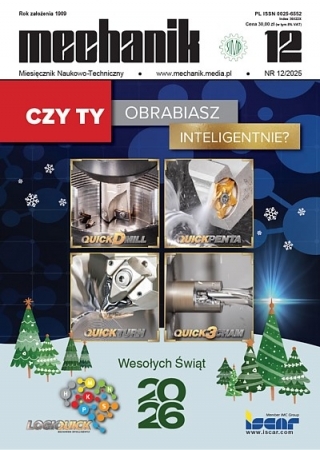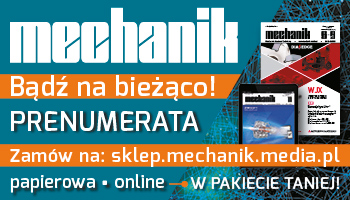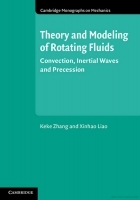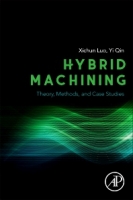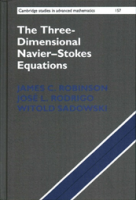Ocena jakościowa procesu deformacji regularnych struktur komórkowych wykonanych techniką druku 3D *
Qualitative evaluation of the deformation process of regular cellular structures manufactured using 3D printing
Author: Piotr Dziewit, Jacek Janiszewski
Mechanik nr 03/2018 - Druk 3D
STRESZCZENIE: Przedstawiono wybrane wyniki badań eksperymentalnych, umożliwiające przeanalizowanie procesu deformacji regularnych struktur komórkowych wykonanych techniką druku 3D w warunkach obciążenia quasi-statycznego. Zaprojektowane w środowisku CAD warianty topologii struktur wykonano metodą FDM (fused deposition modeling), a następnie poddano je badaniom w warunkach jednoosiowego testu na ściskanie. Punktem wyjścia do opracowania poszczególnych wariantów struktur była topologia plastra miodu. Aby przeanalizować wpływ materiału struktury na przebieg procesu deformacji, próbki wykonano z trzech komercyjnie dostępnych materiałów: PC-10, ABSplus i Nylon12. Na podstawie wyników badań oceniono wpływ kształtu komórki elementarnej oraz rodzaju zastosowanego materiału na przebieg deformacji struktury i wartość energii odkształcenia plastycznego.
SŁOWA KLUCZOWE: struktury komórkowe, technika FDM, druk 3D, badania wytrzymałościowe, energochłonność, struktura plastra miodu, wklęsła struktura plastra miodu
ABSTRACT: Presented are selected experimental results concerning the analysis of the deformation process of regular cellular structures manufactured using 3D printing under quasi-static loading conditions. The various structural topologies were designed and manufactured using the FDM (fused deposition modelling) and then tested in a uniaxial compression test. The starting point for the development of individual variants of structures was the honeycomb topology. In order to analyse the influence of the structure material on the deformation process, the samples were made from three commercially available materials: PC-10, ABSplus and Nylon12. Based on the results, the influence of the shape of the single cell and the type of material used on the deformation of the structure as well as the value of the plastic deformation energy were assessed.
KEYWORDS: regular cellular structures, FDM technique, 3D printing, strength tests, energy absorption, honeycomb, re-entrant honeycomb
BIBLIOGRAFIA / BIBLIOGRAPHY:
- Campanelli S.L., Contuzzi N., Ludovico A.D., Caiazzo F., Cardaropoli F., Sergi V. “Manufacturing and characterization of Ti6Al4V lattice components manufactured by selective laser melting”. Materials. 7, 6 (2014): s. 4803–4822.
- Ozdemir Z., Hernandez-Nava E., Tyas A., Warren J.A., Fay S.D., Goodall R., Askes H. “Energy absorption in lattice structures in dynamics: Experiments”. International Journal of Impact Engineering. 89 (2016): s. 49–61.
- Vaezi M., Chianrabutra S., Mellor B., Yang S. “Multiple material additive manufacturing. Part 1: A review. Virtual and Physical Prototyping. 8, 1 (2013): s. 19–50.
- Babaee S., Jahromi B.H., Ajdari A., Nayeb-Hashemi H., Vaziri A. “Mechanical properties of open-cell rhombic dodecahedron cellular structures”. Acta Materialia. 60, 6–7 (2012): s. 2873–2885.
- Li Yang et al. “Low-energy drop weight performance of cellular sandwich panels”. Rapid Prototyping Journal. 21, 4 (2005): s. 433– 442.
- Ajdari A., Nayeb-Hashemi H., Vaziri A. “Dynamic crushing and energy absorption of regular, irregular and functionally graded cellular structures”. International Journal of Solids and Structures. 48, 3–4 (2011): s. 506–516.
- Lee J., Huang A. “Fatigue analysis of FDM materials”. Rapid Prototyping Journal. 19, 4 (2013): s. 291–299.
- Hyun S., Torquato S. “Effective elastic and transport properties of regular honeycombs for all densities”. Journal of Materials Research. 15, 9 (2000): s. 1985–1993.
- Lira C., Scarpa F. “Transverse shear stiffness of thickness gradient honeycombs”. Composites Science and Technology. 70, 6 (2010): s. 930–936.
- www.stratasys.com/ (dostęp: 01.09.2017).
- Yang L., Harrysson O., West H., Cormier D. “Mechanical properties of 3D re-entrant honeycomb auxetic structures realized via additive manufacturing”. International Journal of Solids and Structures. 69–70 (2015): s. 475–490.
DOI: https://doi.org/10.17814/mechanik.2018.3.41
* Artykuł recenzowany



